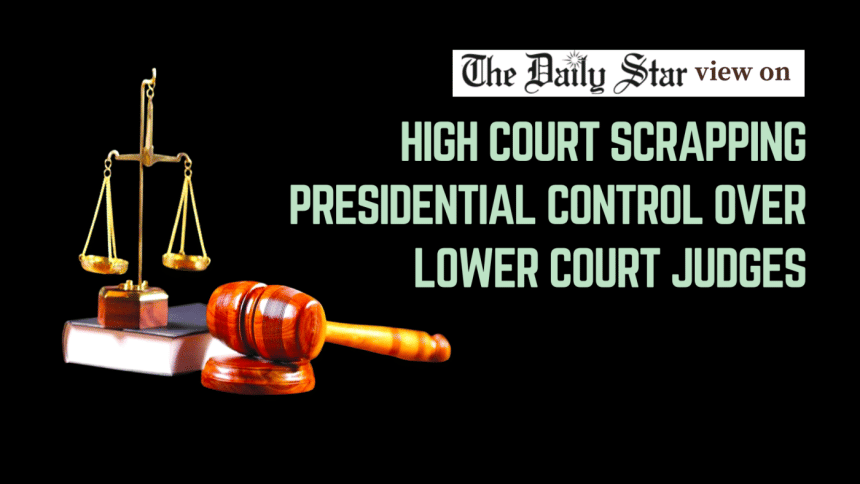A crucial step in restoring judicial powers

It is heartening to learn of a High Court ruling that the Supreme Court—not the president—will henceforth have the authority over the transfer, posting and discipline of lower court judges. According to a report, the court has scrapped Article 116 of the constitution, which had vested these powers in the president, as well as provisions of the Fourth and Fifteenth Amendments that upheld presidential control. The ruling thus restores the original 1972 provision of Article 116 that empowered the SC to oversee these activities. The court also ordered the government to establish a separate judicial secretariat. These changes, we must say, are quite significant and mark a crucial step towards ensuring judicial independence.
By restoring the highest court's authority over lower court judges and magistrates, the ruling reaffirms the principle of separation of powers, which is essential for democracy. If implemented in letter and spirit, it can go a long way towards protecting the judiciary from political interference and strengthening checks and balances among various state organs. But the challenge, as always, lies in effective execution, without which the promise of this verdict may remain unfulfilled.
The need for such reforms is compelling. Over the years, we have seen how deeply executive dominance has eroded the judiciary's independence, compromised its functions, and undermined public trust, resulting in a culture of impunity and all sorts of macabre developments including mob violence. So ongoing reform initiatives—again, if implemented in letter and spirit—may help reverse this trend and even extend judicial services to those previously underserved.
The court ruling followed a writ petition filed by several lawyers, and appears to be a nod to the relevant reform initiatives proposed by the Judiciary Reform Commission in early February. In its 352-page report submitted to the chief adviser, the commission, besides recommending the formation of a judicial secretariat and constitutional amendments to limit presidential powers in judicial appointments, had also suggested the creation of permanent High Court benches in all divisional cities, the formation of a permanent attorney service and an independent investigation agency, and enacting laws to ensure the transparent appointment of judges through a Supreme Court Judge Appointment Commission. Some of these proposals have already gained political consensus during discussions with the National Consensus Commission, including the decentralisation of HC benches and reforming the presidential clemency system.
The need for such reforms is compelling. Over the years, we have seen how deeply executive dominance has eroded the judiciary's independence, compromised its functions, and undermined public trust, resulting in a culture of impunity and all sorts of macabre developments including mob violence. So ongoing reform initiatives—again, if implemented in letter and spirit—may help reverse this trend and even extend judicial services to those previously underserved. One would, however, expect this process to unfold through an organised effort by the higher authorities, rather than through reactive measures such as verdicts on individual petitions. This point is further validated by the state's reported stance on appealing the HC ruling at the Appellate Division, suggesting a conflict or legal dispute that should not have existed.
Clearly, only with coordinated measures, a clear reform implementation timeline, and unwavering political will can the promise of judicial independence be fully realised.

 For all latest news, follow The Daily Star's Google News channel.
For all latest news, follow The Daily Star's Google News channel. 









Comments